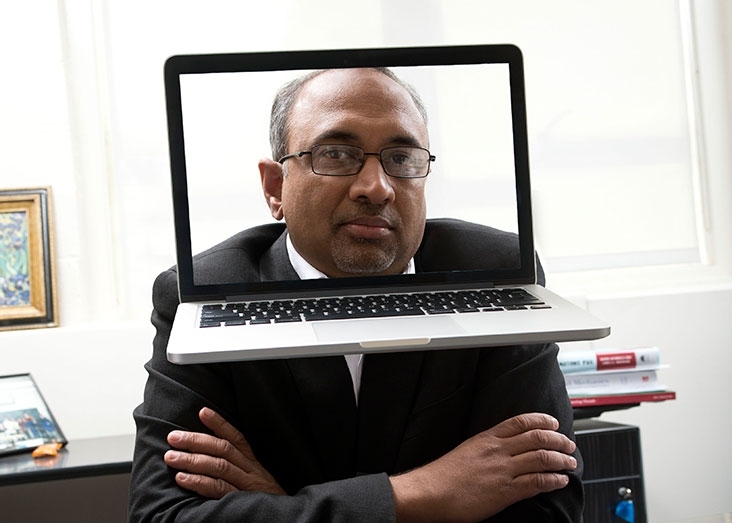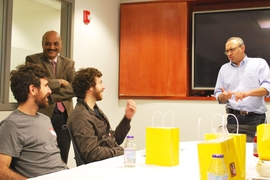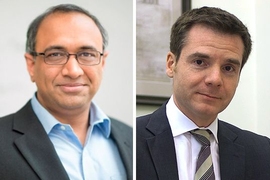"Michelangelo didn’t attend a semester of lectures,” says Sanjay Sarma, “he learned in the studio with a master looking over his shoulder.” And the future of higher education, Sarma says, will carry us right back to the past.
“As the volume of knowledge has increased, frankly we have slipped into lecture mode, which is very passive. And that’s taken us away from a participatory learning approach,” says Sarma, director of MIT’s Office of Digital Learning. “Now there’s a rethinking of pedagogy where the ‘doing’ is making a comeback.”
MIT is helping lead the way to this kind of educational future with initiatives like edX, the platform developed by MIT and Harvard to host more than 30 schools’ massive open online courses, or MOOCs, including MITx. The edX platform has been customized and deployed on campus so that professors can give students instant feedback and, in some cases, “flip” the classroom from an environment focused on rote learning to active participation.
It’s a natural progression for MIT. More than 150 years ago the Institute pioneered the hands-on approach to teaching science and engineering. “And we’ve never forgotten our roots. MIT’s retained that deep interest in learning by doing,” says Sarma, the Fred Fort Flowers and Daniel Fort Flowers Professor of Mechanical Engineering. Examples of Institute innovations applying that approach over the years include the Experimental Studies Group, the Technology-Enabled Active Learning (TEAL) project, and the 2.007 (Design and Manufacturing) robotics course and competition.
What will a college education look like in 10 years?
When future students come to campus, Sarma says, they might take a few foundational courses with many online elements — perhaps even video games — coupled with instant online assessments that give them real-time feedback on their understanding of a subject. That feedback would also be available to the professors, who can then focus classroom work on concepts students struggle with rather than explaining material already understood. As a result, more class time can be spent on activities like building circuits or robots to explore concepts learned online.
“We want to enable more time for our students to build things and interact more with their professors and peers,” says Sarma, co-chair of the Institute-Wide Task Force on the Future of MIT Education with Professor Karen Willcox and Executive Vice President and Treasurer Israel Ruiz. The group released a report on its findings in August.
Students could also opt to spend a semester abroad, doing field work on a project that ultimately becomes a bachelor’s thesis. And all along they could continue to take online courses, interacting with peers and professors at MIT. “The whole college experience will become much more participatory, more like an apprenticeship,” Sarma says.
Another important outcome of the digital era is that MOOCs and tools like automatic grading can be easily shared, bringing quality education to the world. Other institutions, for example, could also use these materials to flip the classroom. Independent learners would also benefit.
Sarma emphasizes that MOOCs and other digital technologies will not replace professors or the residential college. Rather, they’ll enrich them. “Technology isn’t here to somehow displace; it will sweeten the experience.”









